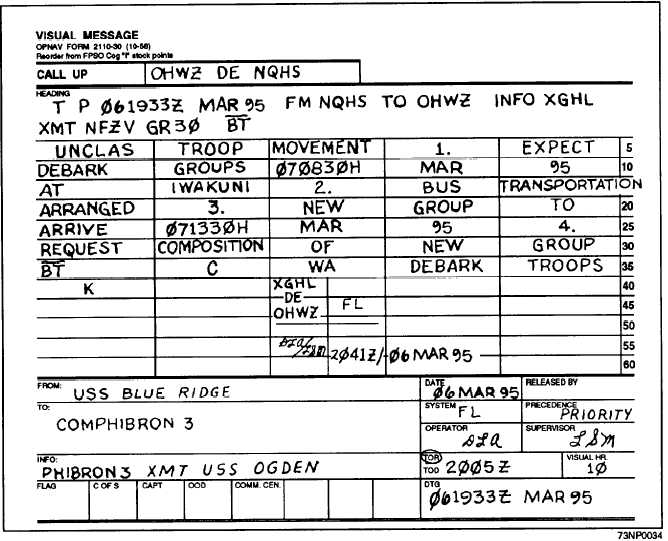Figure 3-2.—Plaindress visual message.
basic message format as designed for visual
communications. Lines 5 through 13 are the
nonchangeable elements of the basic message format.
All format lines do not necessarily appear in every
message; however, when used, they will be in the order
indicated.
Of the three parts of a message, the most complex
(as fig. 3-3 indicates) is the heading. Based on heading
content, messages may be drawn up in one of three
forms: plaindress, as in figure 3-2; abbreviated
plaindress, featuring a shortened heading; and
codress, used for encrypted messages. We will point
out the differences following the discussion of the
plaindress message.
PLAINDRESS MESSAGES
In visual messages, the procedure component
consists of three elements: call, transmission
identification, and transmission instructions. The call
contains call signs of the station(s) called and the
calling station. Transmission identification is not
normally used in visual communications except in
messages being relayed. Transmission instructions are
concerned with routing, relaying, and delivering a
message.
The heading of a plaindress message is made up
The beginning procedure component of the
of four components: procedure, preamble, address,
message in figure 3-2 is OHWZ DE NQHS T. Of this
and prefix. These components provide operating
personnel with necessary information for
transmitting, identifying, delivering, and accounting
for each message.
Procedure Component
3-3


